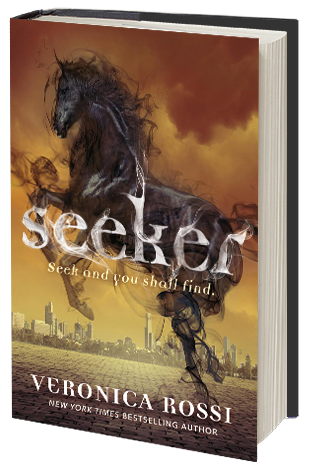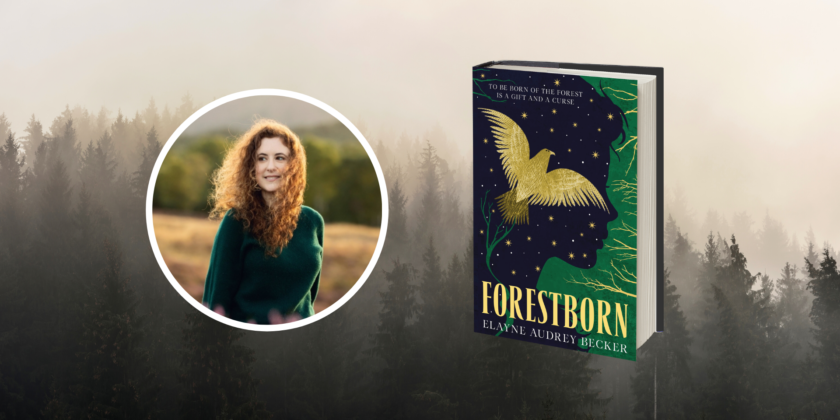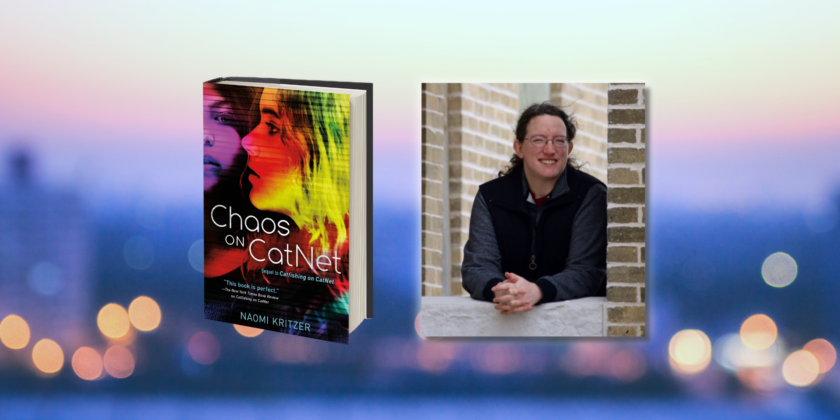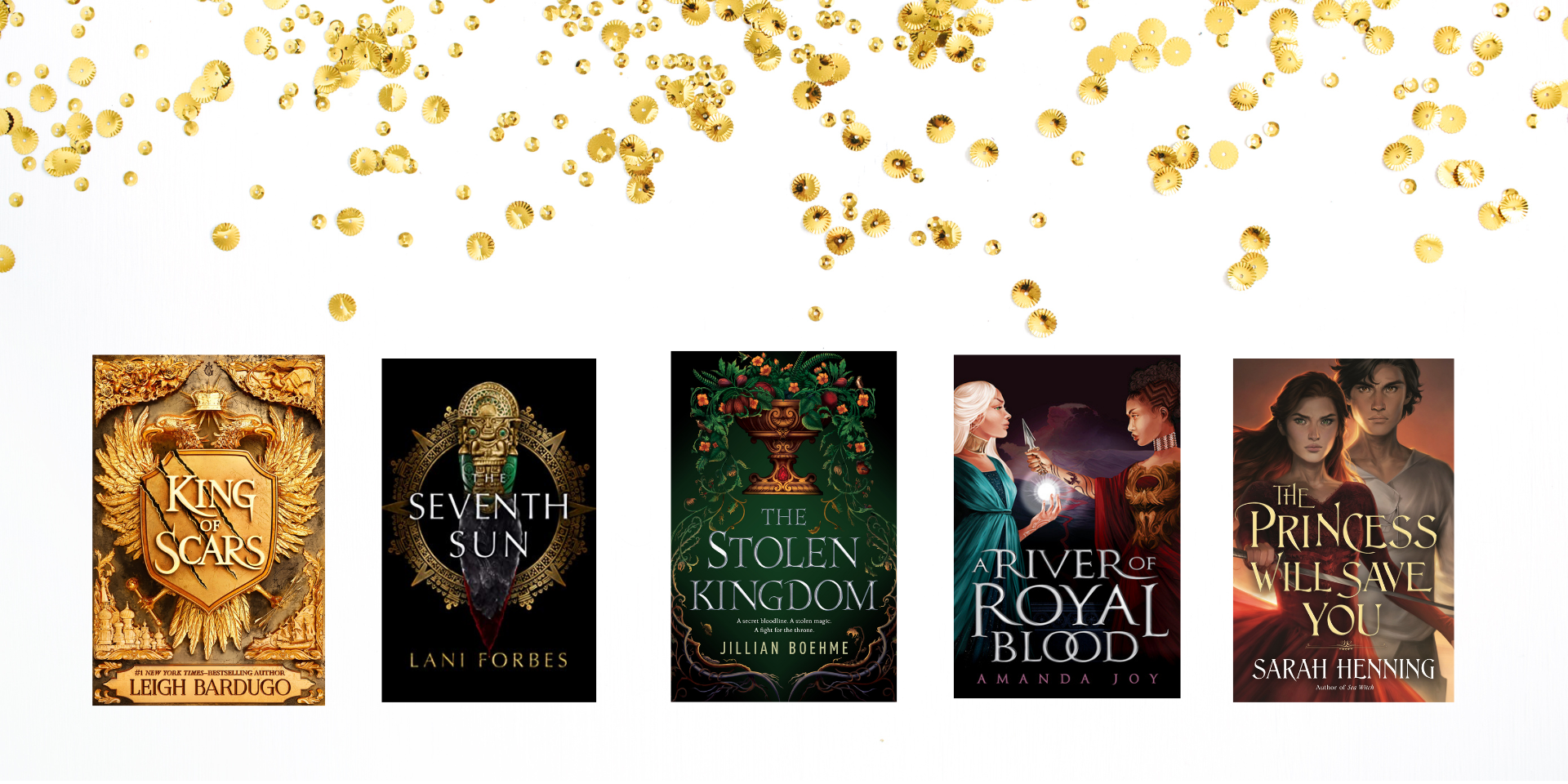
Written by Veronica Rossi
On May 16th, Seeker, the sequel to Riders, will release. I’m really proud of it, but for part of writing process, I felt utterly lost in the woods. I wanted to bring sword fights and swoons to the story, but deep themes like forgiveness and redemption kept showing up instead. Not what I wanted. Clearly, I’d gone wrong somewhere. Then I remembered: there are no mistakes in art. There is only process.
We writers think we have control over our creative process, but the best we can really do is coax it along. We read books that teach us how to structure scenes and how to create characters. We attend conferences and join critique groups. But in the end, the book has its own ideas about what it wants to be. More and more, I believe we’re simply the vessel, holding the story inside us. If we’re clumsy, hasty, disrespectful, we make a mess as we spill our tale. But if we take our time, the pour is clean.
 Before I officially and wholeheartedly became a writer, I was a painter. I attended the California College of the Arts in San Francisco, and I painted every day, and dealt with the struggles of working in that art form how to stay inspired, how to paint with skill, how to marry inspiration with skill to produce something true. Sound familiar? It is, very much so. Creativity is a journey with many roads leading to the same place Art. Here are a few of the similarities I’ve discovered between writing and painting:
Before I officially and wholeheartedly became a writer, I was a painter. I attended the California College of the Arts in San Francisco, and I painted every day, and dealt with the struggles of working in that art form how to stay inspired, how to paint with skill, how to marry inspiration with skill to produce something true. Sound familiar? It is, very much so. Creativity is a journey with many roads leading to the same place Art. Here are a few of the similarities I’ve discovered between writing and painting:
Art is Work – Part of being a creative person is committing to the work involved in discovering your style, your voice. How do you do this? Devour the things you love. If you love a book, let that love be an obsession. Dig in. Read the book again and again. Buy the audio. Transcribe a chapter. Study. Highlight. If it’s a painting, try some sketches inspired by the piece. Your job is to figure out why you love it. Internalize the art until it’s inside you. Your internal artist has an incredible storage system called the subconscious. Nothing ever gets lost or wasted. Just get the good stuff in there. The rest is not really up to you.
Watch Out for Mud – Part of trusting the process is not forcing the process. In painting with oils, you can overwork a canvas to the point that paints blend together, creating an awful muddy color. It’s actually worse than mud it’s the color of a cadaver. Usually this happens when you’re overthinking it. You’re creating with your head, not your heart. You’re saying, “It could be a little more this, or a little more that,” instead of asking, “how can I make this more true, more honest?” I do this all the time. I think it comes from wanting so badly to create something great. But greatness cannot be rushed or forced. Greatness requires patience. It requires trust and confidence. So, slow down. If you think you’re making mud, back off. Take some time to meditate on the piece, or the scene. Wrong turns are part of the process. It’s up to you to see them, and to correct your course.
Turn Your Canvas – One of the earliest tricks I learned in art school was to flip the canvas by 90 degrees and step back. This simple trick allows you to see the composition in a new way, giving you a fresh perspective. I use several methods to achieve this “turn of the canvas” in my writing; some are incredibly simple and effective:
- Change the font
- Open your document on an e-reader or in another program
- Print and bind your pages
- Send your scene to an audio program and listen to your writing
- Read your writing out loud, or have a friend read it to you
Learn the Rules So You Can Break Them – I loved this rule in art school. We embraced it. We copied the masters. Renaissance painters like Michelangelo and Da Vinci. We copied Picasso, Dali, Monet, Matisse. We fell incredibly short most of the time, but that wasn’t the point. The point was to learn the strokes, the colors. By learning the language of art, you can play with it. Defy it, bend it, stretch it. In writing, you read to learn the art of language. So read broadly. Read everything things you hate, things you love, things you never thought you’d ever read. Just read. Then forget the rules and have some fun.
Trust the Process – Such a cliché, isn’t it? Yet, after half a dozen books written, I have to remind myself of this all the time. Trust the process. Trust. The Process. And remember that it will never be the same process twice. You’re never writing the same book, or painting the same painting. Even if you’re rewriting or repainting something, you are not the same the second (or third or fourth or hundredth) time. You’ve had new experiences. You’ve learned something (even if you don’t know it.) Trust the process. Do it.
Once, in art school, I was trying to forcibly squeeze oil paint from a tube that had coagulated. I was standing in front of a painting that was almost done when I did this. You know what’s coming, right? A geyser of paint exploded across a piece I’d spent all day perfecting. Raw Sienna. A beautiful color. Like dirt that’s alive dirt that has the ruddy life of blood in it. Beautiful, but not when it’s everywhere. After this materials eruption, I didn’t know if I wanted to laugh or cry. I think I did both. But then it was time to adapt. I could’ve tried to scoop the paint away with a palette knife and likely ruined the entire canvas. Instead, I took a brush and got to work and got exactly the painting that was asking to be made, a painting rich with earth tones. A piece with a pulse, bolder than it would’ve ever been had I not trusted the process.
Art loves mistakes, they say. Knowing that, why not create full-throttle?
What are some of our approaches to creativity?
Order Your Copy:
Follow Veronica Rossi on Twitter, on Facebook, and on her website.
(This is a rerun of a post that originally ran on the Tor/Forge Blog)



